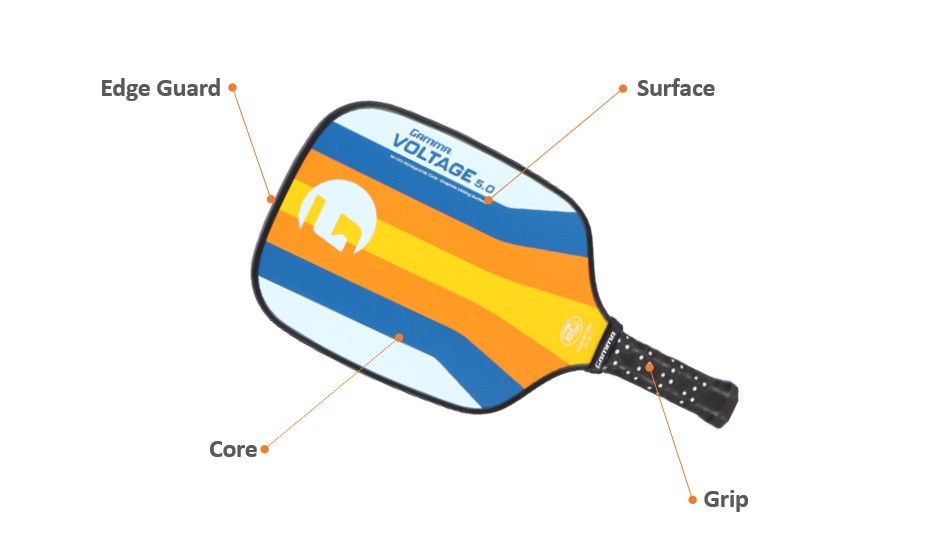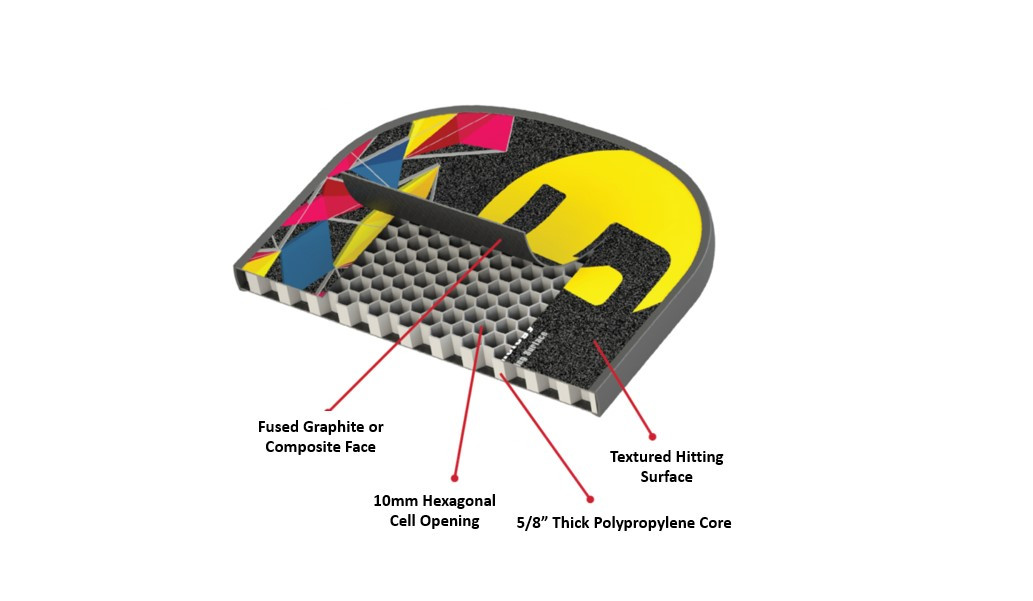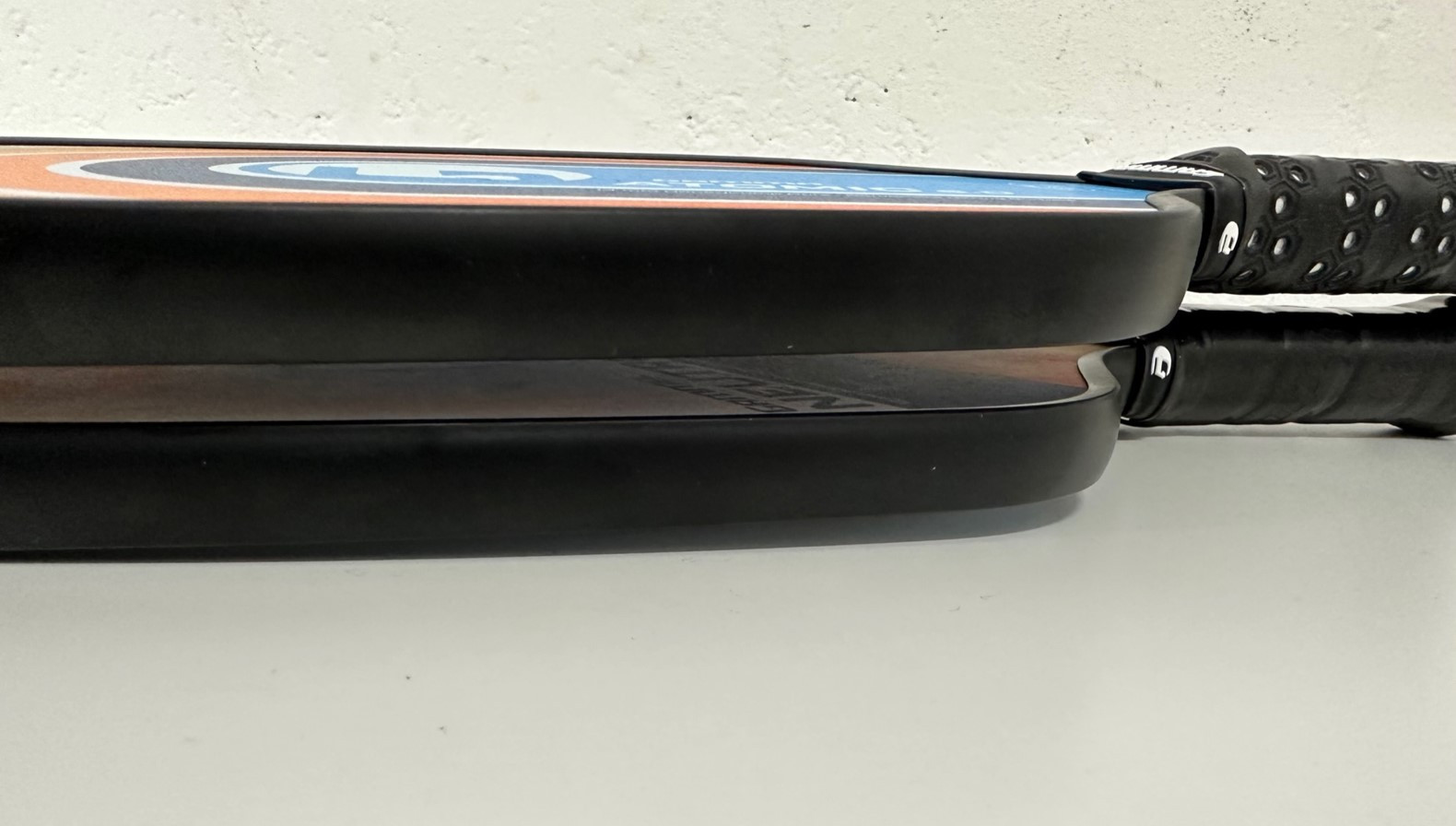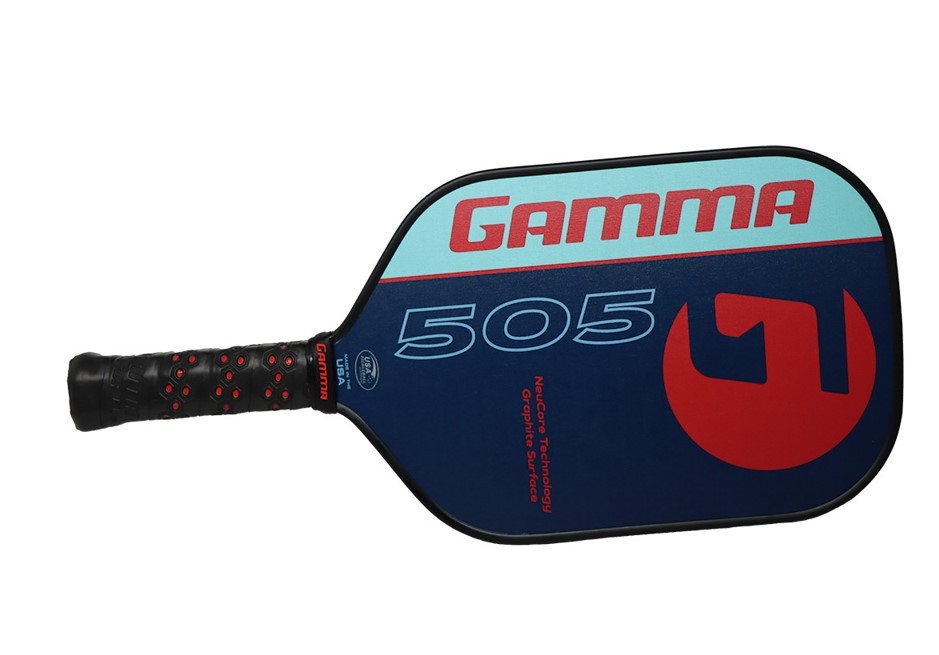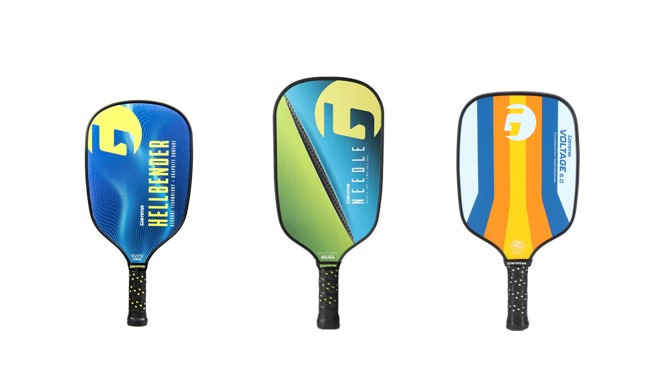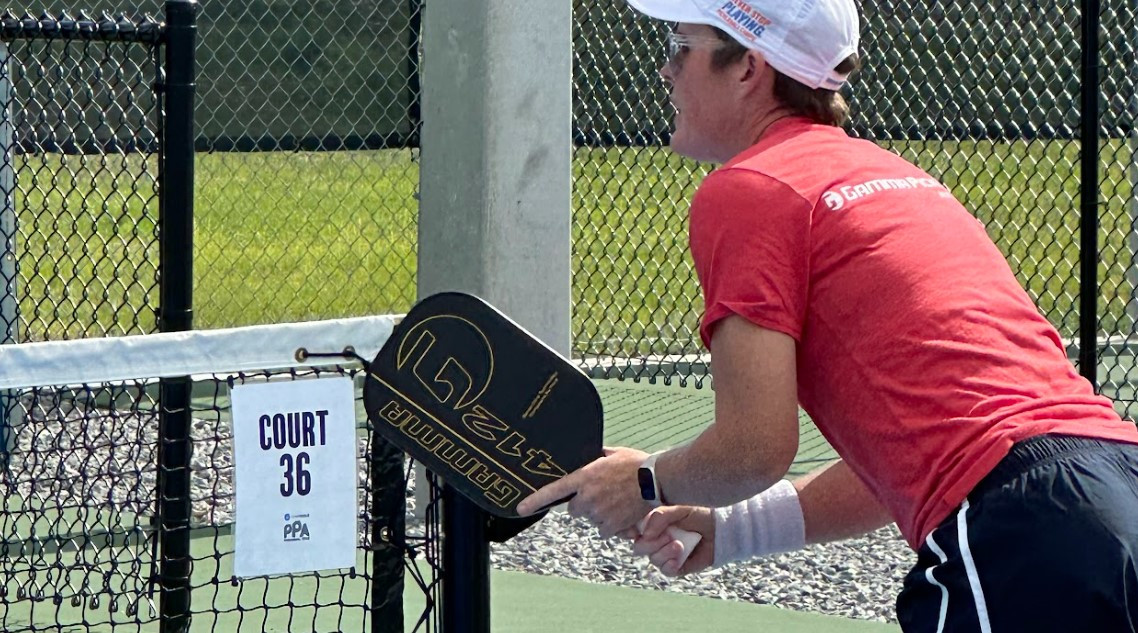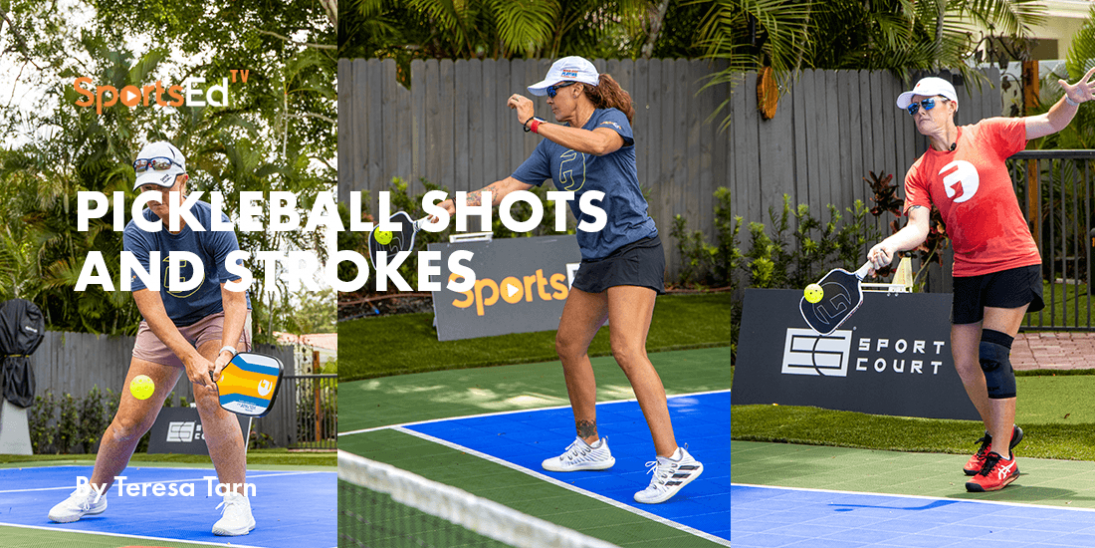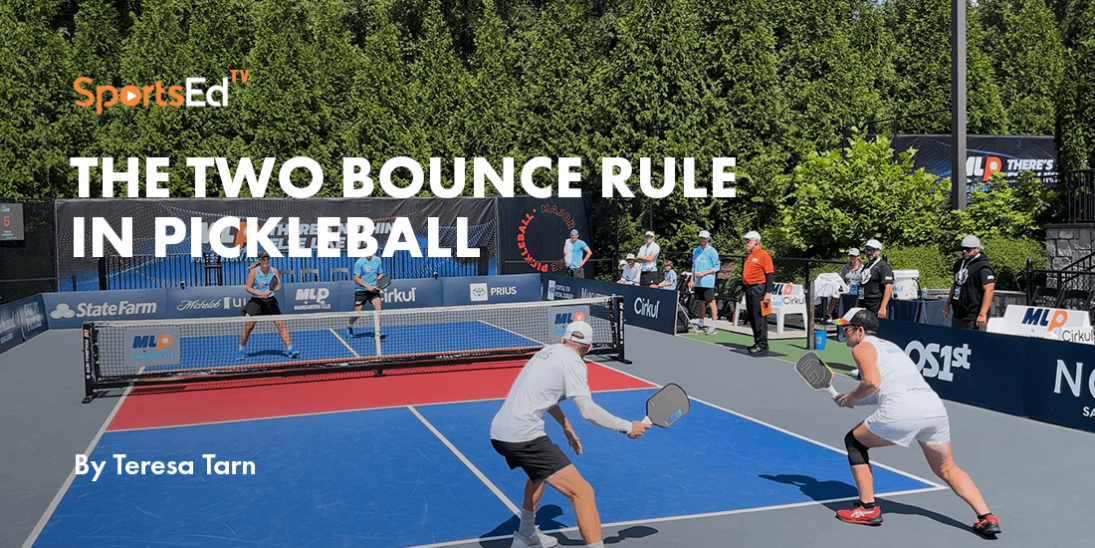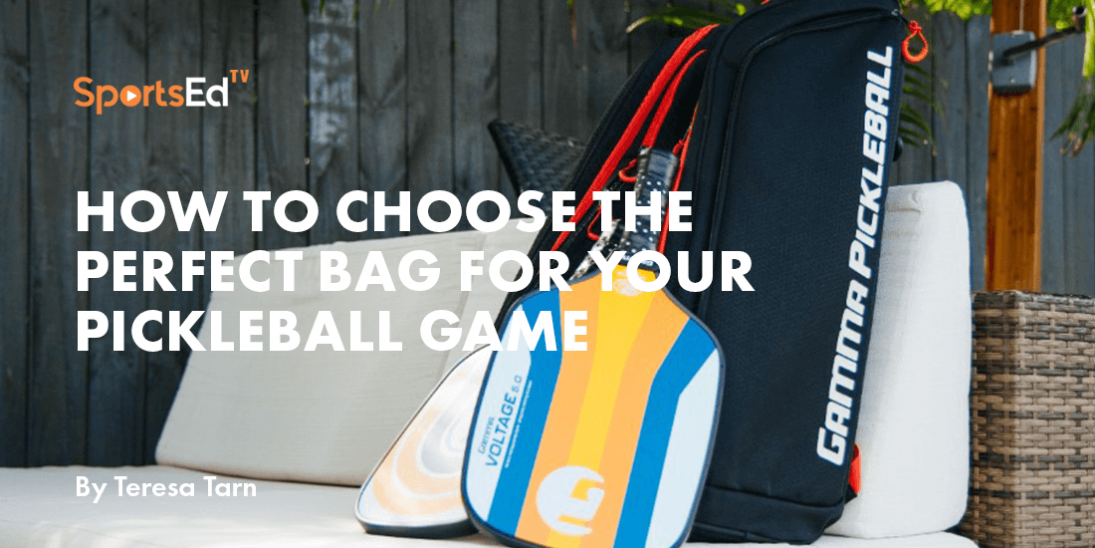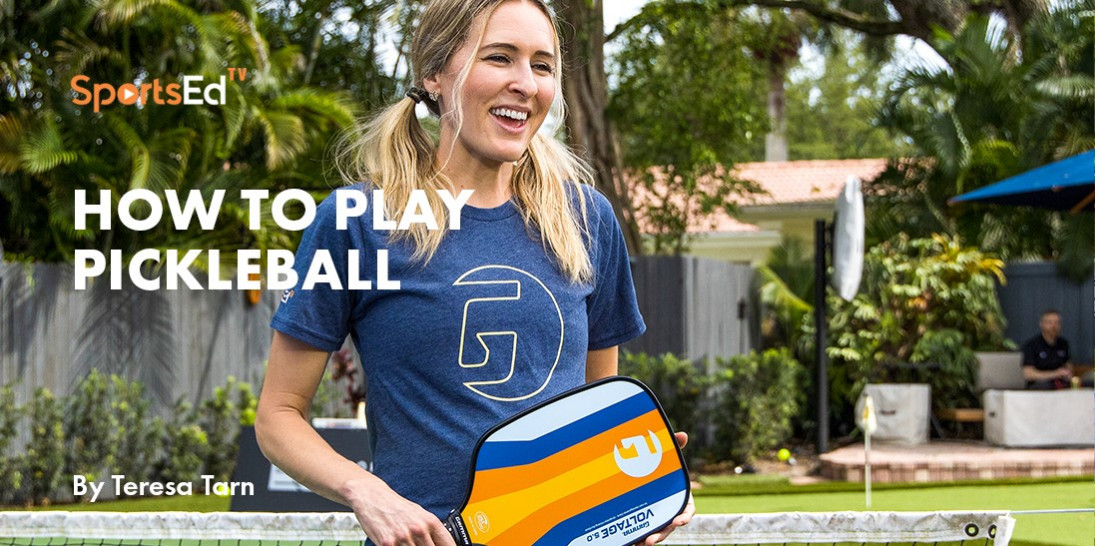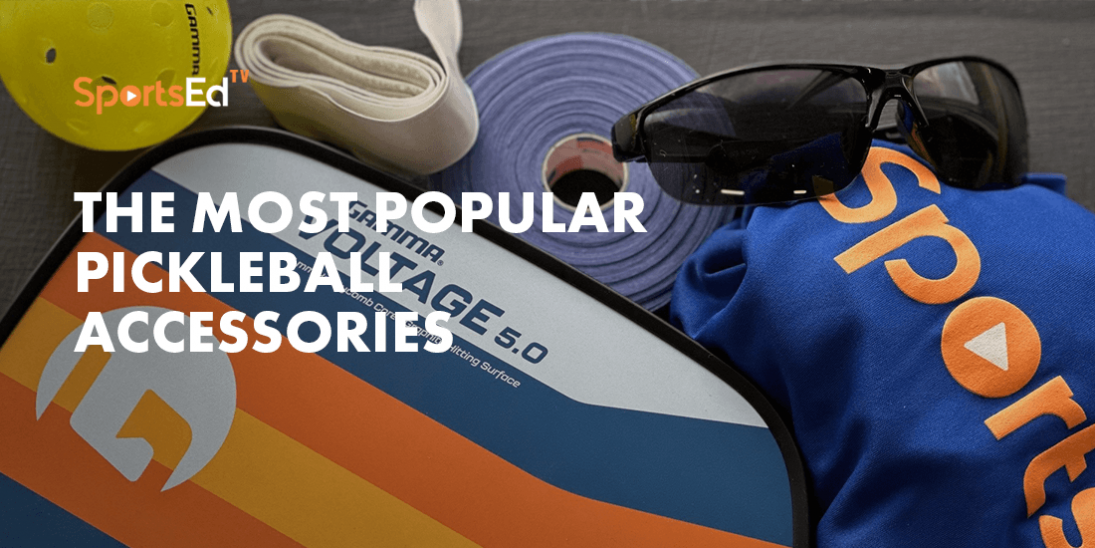Pickleball
Welcome and thanks for visiting...

The Ultimate Guide to Pickleball Paddles: Everything You Need to Know
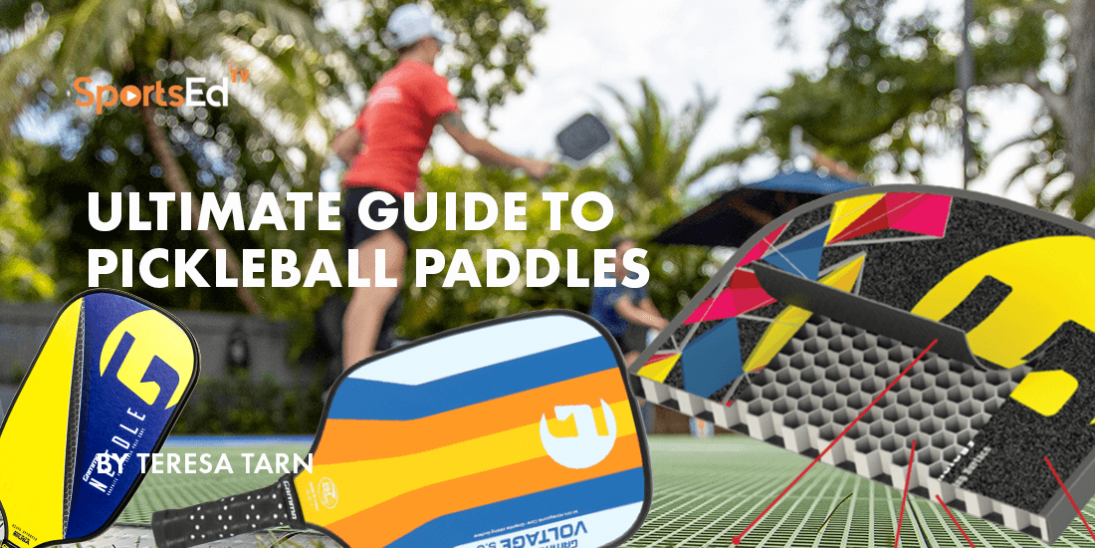
The pickleball paddle is a crucial piece of equipment for playing the sport of pickleball. Understanding the basic components and features of a pickleball paddle can help you choose the right one for your skill level and playing style. Here are the basics of a pickleball paddle:
Understand the Basics of Pickleball Paddles.
Nowadays, a standard pickleball paddle is composed of a honeycomb structure (the core, which constitutes the paddle's middle layer) encased between two faces (the paddle's surface on both sides). This core, enclosed between the surfaces, forms a panel. The surfaces adhere to the core on either side using a powerful adhesive. Graphics are imprinted on each paddle surface. An edge guard is affixed around the paddle's border for protection. Finally, the handle is constructed atop the panel's handle end, consisting of two pallets (which provide the handle's shape) and an end cap placed over the pallets' bottom. The grip is tailored to each individual's hand by increasing the handle in 1/8" increments. Grip tape is wrapped around the handle (with wrapping direction differing for left-handed and right-handed players), and a band is positioned at the grip's top to secure it in place and create a polished end, preventing unraveling.
- Size and Shape: Pickleball paddles come in a variety of sizes and shapes. Standard paddles have a wider face and a shorter handle, while elongated or "blade" paddles have a narrower face and a longer handle. Standard paddles offer a larger sweet spot and more power, while elongated paddles provide better reach and control. The choice depends on your playing style and personal preference.
- Weight: Paddle weight is an important consideration when choosing a pickleball paddle. Lighter paddles (7-8 ounces) are easier to maneuver and allow for quicker reaction times, while heavier paddles (8-12 ounces) provide more power and stability. Players who prefer a finesse game may opt for lighter paddles, while those who rely on power may prefer heavier paddles.
- Handle and Grip Size: The grip size of a pickleball paddle affects comfort and control during play. It is essential to choose a grip size that feels comfortable and allows for proper wrist movement. Grips are typically available in sizes ranging from 4 inches to 4 3/4 inches in circumference. As a general rule, smaller hands should use smaller grips, and larger hands should use larger grips.
- Edge Guard: An edge guard is a protective strip around the perimeter of the paddle face. It protects the paddle from damage due to contact with the ground or other paddles. Some paddles are edgeless, which may provide a larger hitting surface but may be more prone to damage.
- Core: The core material of a pickleball paddle affects its performance characteristics. Common core materials include aluminum, polymer, and Nomex. Aluminum cores offer a good balance of power and control, while polymer cores are known for their quietness and soft play. Nomex cores are lightweight and provide more power and responsiveness but may be louder and have a harder feel.
- Surface Texture: The surface texture of a pickleball paddle, which can be made of carbon fiber, composite, or graphite, plays a role in spin and control. Paddles may have a smooth surface, while others feature a textured or rough surface to boost spin production. Your preferred surface texture depends on your playing style and proficiency.
Pickleball Paddles Core
Polymer/Polypropylene Core
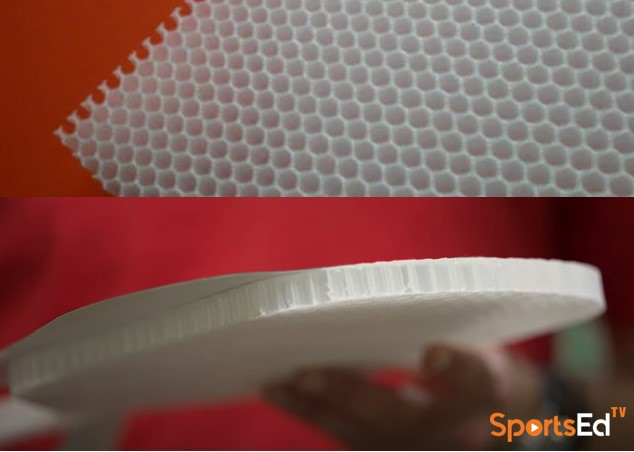
The most prevalent core found in pickleball paddles is often referred to as "Poly," "Polymer," or "Polypropylene." These cores cater to pickleball players of all levels. They consist of a pliable and, crucially, noise-reducing plastic blend configured in large honeycomb cells, delivering gentle touch, superior control, and the quietest performance among available core choices. A significant majority of paddles seen at local courts or professional events will feature polymer cores.
Key advantages of polymer core pickleball paddles encompass:
- Gentle sensation
- Optimal touch
- Low noise
Nomex core
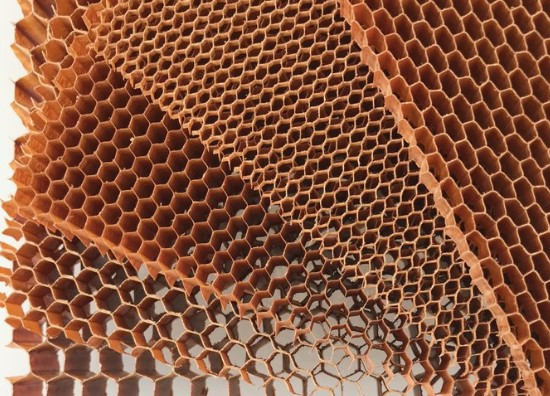
Nomex is a synthetic material known for its heat and flame resistance, as well as its high strength and durability. It is a type of aromatic polyamide, also known as aramid, and was developed by DuPont in the early 1960s. The full chemical name for Nomex is poly(m-phenylene isophthalamide).
Nomex is used in pickleball paddles as a core material. The core of a pickleball paddle significantly affects its performance characteristics, and Nomex is one of the common materials used in paddle construction.
Nomex cores are created by dipping a honeycomb structure made of DuPont's Nomex paper into a phenolic resin, which is then cured under heat and pressure. This process produces a lightweight, rigid, and strong core with the following characteristics:
- Responsiveness: Nomex cores are known for their responsiveness, providing a crisp and lively feel when striking the ball.
- Power: Paddles with Nomex cores generally offer more power compared to those with other core materials, making them suitable for players who prioritize power in their game.
- Durability: Nomex cores are strong and durable, providing a long-lasting paddle that can withstand regular use and impacts.
- Sound: Paddles with Nomex cores tend to produce a louder, more distinctive "pop" sound when the ball is struck. This may be preferred by some players but might not be suitable for noise-sensitive environments.
Aluminum core
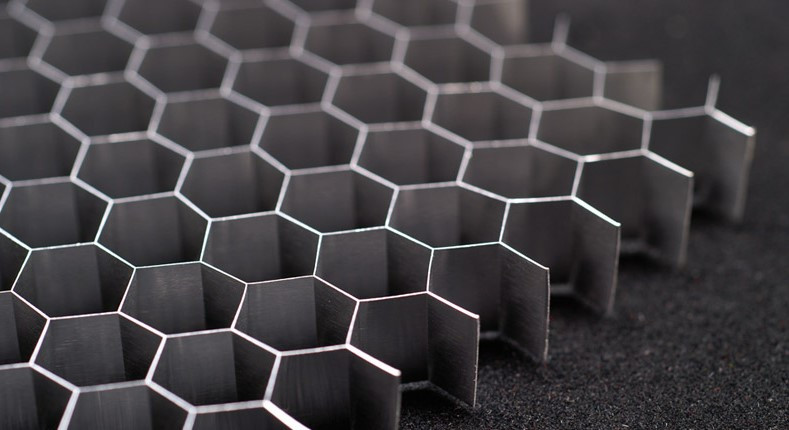
you might also encounter pickleball paddles with aluminum cores. These cores boast a light construction and a distinctive honeycomb pattern. The reduced weight of aluminum core paddles renders them suitable for young players or those new to the sport.
Paddle thickness
The thickness of a pickleball paddle is another important factor to consider when choosing the right paddle for you. Paddle thickness can have a significant impact on the overall performance and feel of the paddle during gameplay. Generally, paddle thickness ranges from about 0.25 inches (6.35 mm) to 0.6 inches (15.24 mm), and they can be classified into three categories: thin, medium, and thick.
As a general guideline, a thicker core results in a softer feel and heightened control. In contrast, a thinner core leads to a firmer sensation upon impact and increased power.
- Thin Paddles: Thin paddles, typically around 0.25 to 0.35 inches (6.35 to 8.9 mm) thick. They are ideal for players who want to generate significant force behind their shots, making it harder for their opponents to return the ball. However, thin paddles generally provide less control and touch, which may not be suitable for players who rely on finesse and precise shot placement.
- Medium Paddles: Medium-thickness paddles fall within the range of 0.35 to 0.5 inches (8.9 to 12.7 mm). They provide a balance between power and control, making them a popular choice for many players. This thickness suits players who desire a mix of both touch and power in their game.
- Thick Paddles: Thick paddles are usually between 0.5 to 0.6 inches (12.7 to 15.24 mm) . They are well-suited for players with a soft touch and finesse playstyle, as they provide more feel and allow for precise shot placement. However, they usually lack power, which may be a disadvantage for players seeking to generate powerful shots.
Paddle Surface
The three most prevalent surfaces for pickleball paddles include Carbon Fiber Weave, Graphite, and Fiberglass Composite. Each surface, when paired with a core material, offers a performance profile tailored to each player's distinct style and abilities.
Carbon Fiber - (softest surface material)
Carbon fiber surfaces are the priciest, most resilient, and lightest in weight. When adequately bonded to a honeycomb core, Carbon Fiber weave (a fabric before attachment to a honeycomb core) is robust, long-lasting, advanced, and visually distinctive. It delivers exceptional ball control but may sacrifice a bit of power compared to other surfaces.
Fiberglass Composite - (most balanced surface material)
Composite paddle faces utilize cutting-edge aerospace composite material technology. The range of composite surfaces is growing throughout the industry, enhancing their playability. These paddles boast an outstanding mix of touch, feel, and strength. The Composite surface offers slightly more power than the other two surfaces.
Graphite - (firmest surface material)
Graphite paddle surfaces are incredibly thin, roughly the thickness of a fingernail. They are light and responsive while being hard and sturdy. Players appreciate the swift action off the Graphite face. Graphite is somewhat heavier than carbon fiber and marginally less durable (and more cost-effective, leading many manufacturers to choose it over carbon fiber). Due to Graphite's rigid nature, the ball doesn't sink into it, making it easier to direct the ball and ensuring excellent ball placement.
Paddle shape
Paddles are available in various shapes, such as elongated, slightly elongated, rectangle, and teardrop.
- The elongated design typically measures around 16.5 inches in length and 7.5 inches in width. This style provides increased reach, power, and spin while sacrificing the sweet spot size and maneuverability compared to other shapes.
- Broad-Faced Designs. These paddles possess a wider face of about 8.5 inches and a shorter length of approximately 15.5 inches. This structure offers a more extensive sweet spot and improved maneuverability but compromises reach and power.
- Traditional Designs. This initial paddle shape generally measures around 16 inches in length and 8 inches in width. This style serves as a balanced option between elongated and broad-faced shapes, offering a combination of power, spin, forgiveness, and maneuverability.
How Does the Shape Influence My Paddle Selection?
Various shapes exist in the market. As long as the shape complements the core and facing, you'll be in good shape. For instance, if you prefer an elongated paddle for extra reach and power, search for one with a carbon fiber facing to help enlarge the sweet spot. If you have an elongated design with a fiberglass face, both elements of the paddle reduce the sweet spot, which may not be the ideal combination.
Paddle weight
Paddle weights typically range from 7 to 8.5 ounces. The 7 to 7.6 oz category is deemed lightweight, 7.6 to 8.2 oz is considered midweight, and anything above 8.2 oz is classified as heavyweight. Although some brands may have slightly different weight ranges for each category, these classifications provide a general understanding.
How Does Paddle Weight Influence My Choice?
Lighter paddles are easier to maneuver, which can be a significant advantage when engaged in rapid exchanges with opponents at the net. However, generating more power with a lighter paddle requires a harder swing.
Heavier paddles don't necessitate as much force for power generation because there's more mass behind the ball. This is particularly useful during dinking, as shorter swings minimize errors and allow for quicker recovery to a ready position.
Heavier paddles tend to offer greater stability upon impact and are less prone to wobbling if the ball strikes near the paddle's edge. This enhances consistency and minimizes mistakes.
Adding lead tape to a paddle's edge guard is a common practice among players. Therefore, if you have a lighter paddle and desire more weight, you can always incorporate some lead tape.
Handle
Handle length can range from 4.5 to 6 inches. Since the combined length and width of the paddle cannot surpass 24 inches, adding length to the handle reduces the paddle face's surface area.
- Longer handles enable more power and spin generation
- Less experienced players produce more power on average with shorter, wider paddles as they have difficulty consistently hitting the paddle's center
How Does Handle Length Affect My Paddle Choice?
Some players prefer to grip the paddle with both hands consistently, while others use only one hand. There are also players who use both hands for backhand drives but only one hand when near the net.
If you always use both hands, you'll want a handle length of at least 5.25 inches, or perhaps even longer. However, if you never use two hands, a standard 5-inch handle length should suffice.
What size grip is best for pickleball?
How the paddle’s handle fits in your hand is likely the most important fitting element you can make in your selection process. After all, your hand is the only connection your body has between the paddle and the game itself.
A paddle with a larger or thicker handle offers stability and will reduce pressure on your arm as compared to smaller-handled paddles.
Smaller handles offer more control over shots and allow the spin to be applied more easily than with a large-handled paddle. Small-handled paddles are easier to switch hands while playing.
To ease your selection decision, remember when you buy a smaller handled paddle there are solutions to temporarily building up the handles, such as over grips and taping. Downsizing a large handle is nearly impossible.
Handle sizing can begin by using the ruler test. Open your hand, extend your fingers, and align a ruler parallel with your ring finger with the base or end of the ruler in line with the palm’s middle crease.
Most hands will find the length between the tip of the ring finger to the middle crease to fall between 4 and 5 inches. Your precise measurement determines your handle size.
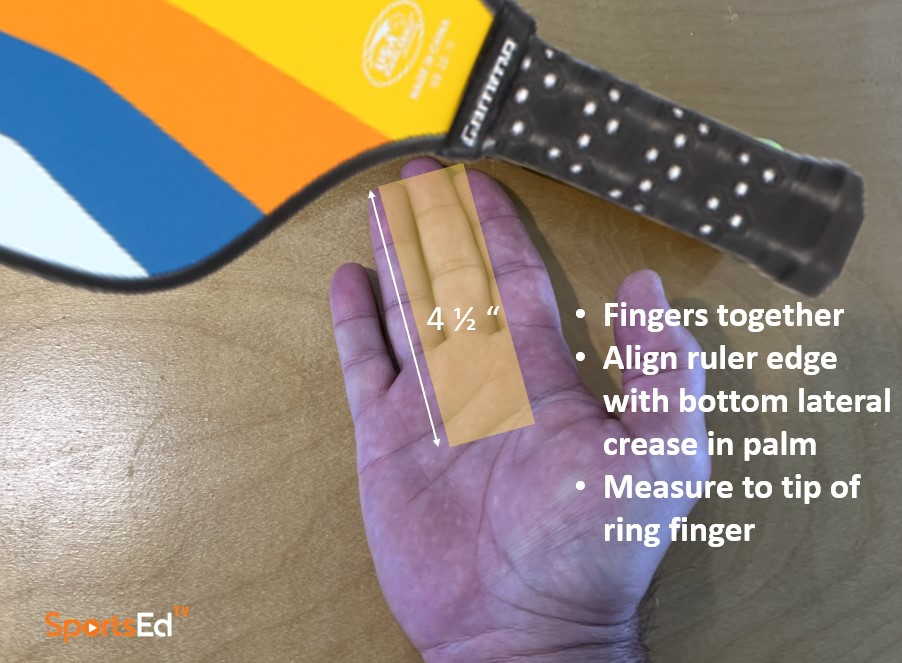
Another way to find the handle size that will work best for you is the index finger test. Here's how to do it. With your dominant hand, grasp the handle so the knuckle of your index finger and the heel pad of your playing hand rests on the same bevel that matches the face of the paddle.
Now, with the index finger of your free hand, slide it between the gap between the handle and the tip of your ring finger, grasping the handle. The space there determines your choice.
Too much space or too little indicates whether the paddle handle is too large or small for you. A snug fit indicates your correct paddle handle size.
After fitting yourself, remember it is always easier to adjust a smaller grip to your changing handle issues by adding an overgrip to the handle. Again, it is difficult to reduce the size of the handle, and a larger handle can be the culprit for arm fatigue.
In conclusion, when choosing the perfect pickleball paddle, it's essential to consider various factors such as core materials, surface materials, paddle shapes, handle lengths, and weights. Each of these factors significantly impacts your playing style and overall performance on the court. Remember that each player has unique preferences and requirements, so it's crucial to find a paddle that aligns with your individual skills and playstyle. By understanding the distinctions between different paddles and their components, you'll be better equipped to make an informed decision and ultimately enhance your pickleball experience.
